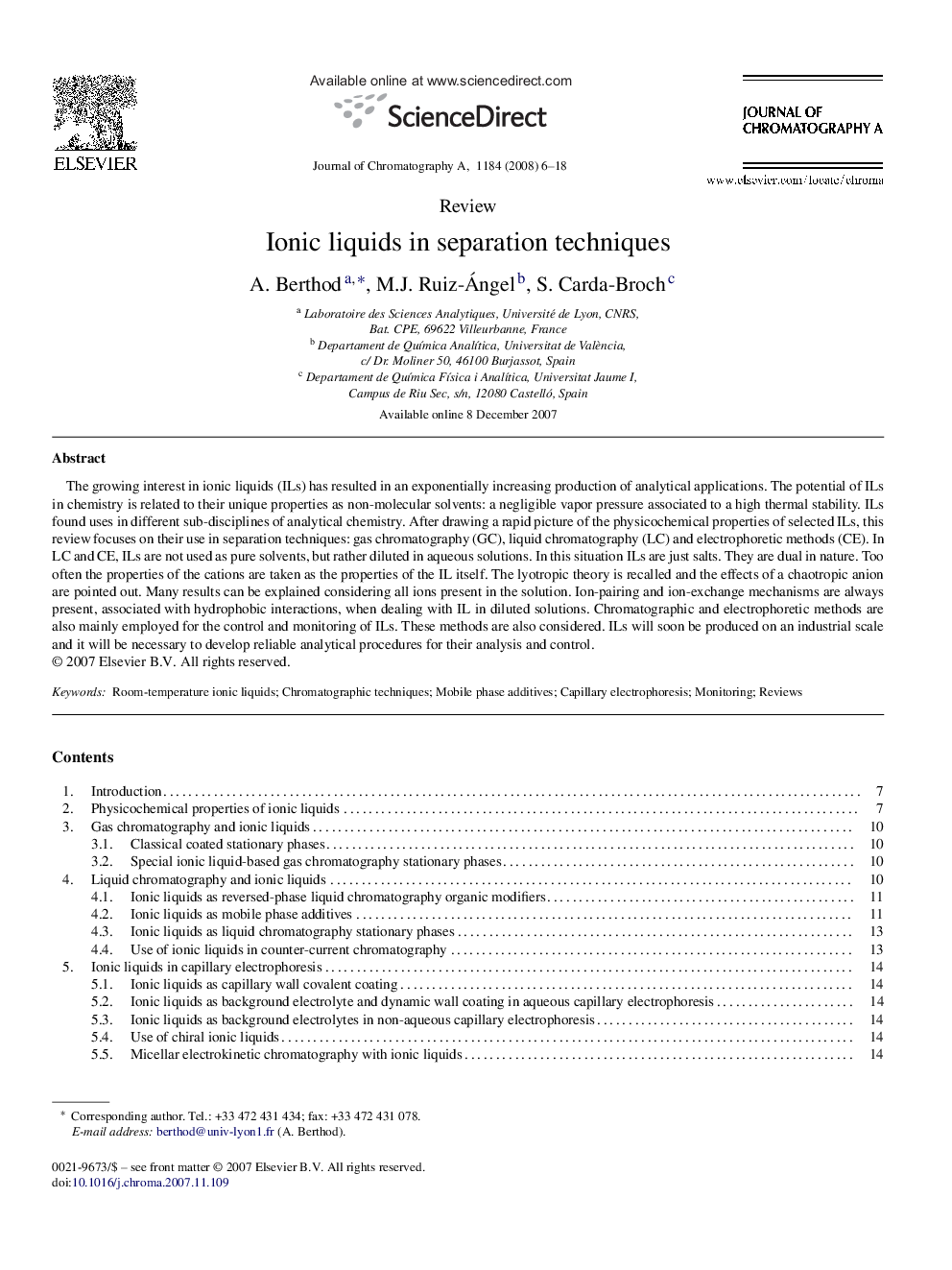| Article ID | Journal | Published Year | Pages | File Type |
|---|---|---|---|---|
| 1207423 | Journal of Chromatography A | 2008 | 13 Pages |
The growing interest in ionic liquids (ILs) has resulted in an exponentially increasing production of analytical applications. The potential of ILs in chemistry is related to their unique properties as non-molecular solvents: a negligible vapor pressure associated to a high thermal stability. ILs found uses in different sub-disciplines of analytical chemistry. After drawing a rapid picture of the physicochemical properties of selected ILs, this review focuses on their use in separation techniques: gas chromatography (GC), liquid chromatography (LC) and electrophoretic methods (CE). In LC and CE, ILs are not used as pure solvents, but rather diluted in aqueous solutions. In this situation ILs are just salts. They are dual in nature. Too often the properties of the cations are taken as the properties of the IL itself. The lyotropic theory is recalled and the effects of a chaotropic anion are pointed out. Many results can be explained considering all ions present in the solution. Ion-pairing and ion-exchange mechanisms are always present, associated with hydrophobic interactions, when dealing with IL in diluted solutions. Chromatographic and electrophoretic methods are also mainly employed for the control and monitoring of ILs. These methods are also considered. ILs will soon be produced on an industrial scale and it will be necessary to develop reliable analytical procedures for their analysis and control.
